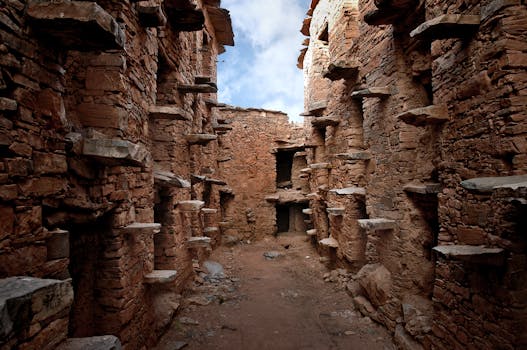Connecting Cultures: The Story Behind Africa’s Diverse Fiber Traditions and Its Impact on Global Connectivity

Connecting Cultures: The Story Behind Africa’s Diverse Fiber Traditions and Its Impact on Global Connectivity
Connecting Cultures: The Story Behind Africa’s Diverse Fiber Traditions is a testament to the continent’s rich cultural heritage and its influence on global connectivity. The history of fiber traditions in Africa is a long and varied one, with different cultures developing their own unique methods of spinning, dyeing, and weaving fibers. From the vibrant textiles of West Africa to the intricate baskets of East Africa, each region has its own distinct fiber tradition that reflects the local culture and environment.
Africa’s diverse fiber traditions have not only played a significant role in the continent’s cultural heritage but also had a profound impact on global connectivity. The use of fibers in African cultures has facilitated trade, communication, and the exchange of ideas between different communities. For instance, the ancient trade routes of West Africa, such as the Trans-Saharan Trade Route, relied heavily on the exchange of fibers, including cotton, wool, and silk. This exchange of fibers not only facilitated the growth of local economies but also helped to establish global connections between Africa, Europe, and Asia.
The History of Fiber Traditions in Africa
The history of fiber traditions in Africa dates back thousands of years, with evidence of textile production found in ancient civilizations such as Egypt, Nubia, and Axum. The use of fibers in African cultures was not only limited to clothing and textiles but also played a significant role in the production of baskets, mats, and other household items. The introduction of new fibers, such as cotton and silk, from Asia and Europe, further enriched the diversity of African fiber traditions.
One of the most significant factors that have contributed to the diversity of fiber traditions in Africa is the continent’s rich cultural heritage. With over 2,000 languages and more than 3,000 ethnic groups, Africa is home to a vast array of cultures, each with its own unique traditions and customs. The use of fibers in African cultures has been shaped by these diverse traditions, resulting in a wide range of fiber arts, including weaving, knitting, and embroidery.
The Significance of Fiber Traditions in African Cultures
Fiber traditions have played a vital role in African cultures, serving not only as a means of creative expression but also as a way of communicating cultural values and traditions. In many African societies, fibers are used to convey social status, marital status, and cultural identity. For example, in some West African cultures, the color and pattern of a person’s clothing can indicate their social status, with certain colors and patterns reserved for royalty or other high-ranking individuals.
The significance of fiber traditions in African cultures is also reflected in the importance of textiles in African art and symbolism. Textiles have been used to depict mythological and historical events, as well as to convey moral and philosophical messages. The use of fibers in African cultures has also been influenced by the continent’s rich spiritual heritage, with many fibers being imbued with spiritual significance and used in ritual and ceremonial contexts.
The Impact of Globalization on African Fiber Traditions
The impact of globalization on African fiber traditions has been significant, with many traditional fiber arts facing the threat of extinction. The introduction of synthetic fibers and cheap, mass-produced textiles has led to a decline in the demand for traditional fibers, making it difficult for many African fiber artists to sustain their livelihoods. Furthermore, the globalization of fashion has led to the homogenization of styles, with many African cultures adopting Western-style clothing and abandoning their traditional fiber arts.
However, in recent years, there has been a resurgence of interest in African fiber traditions, with many young designers and artists seeking to revive and reinvigorate traditional fiber arts. The use of social media and e-commerce platforms has also made it possible for African fiber artists to showcase and sell their work globally, providing new opportunities for cultural exchange and economic empowerment.
Preserving African Fiber Traditions in the Digital Age
Preserving African fiber traditions in the digital age is crucial, not only for the sake of cultural heritage but also for the economic empowerment of African communities. The use of digital technologies, such as 3D printing and digital weaving, can help to preserve traditional fiber arts and make them more accessible to a global audience. Furthermore, the development of online platforms and marketplaces can provide African fiber artists with new opportunities for selling their work and connecting with customers around the world.
In conclusion, Connecting Cultures: The Story Behind Africa’s Diverse Fiber Traditions is a testament to the continent’s rich cultural heritage and its influence on global connectivity. The history and significance of fiber traditions in African cultures are a reminder of the importance of preserving cultural heritage in the digital age. By promoting and preserving African fiber traditions, we can help to promote cultural diversity, economic empowerment, and global connectivity.


